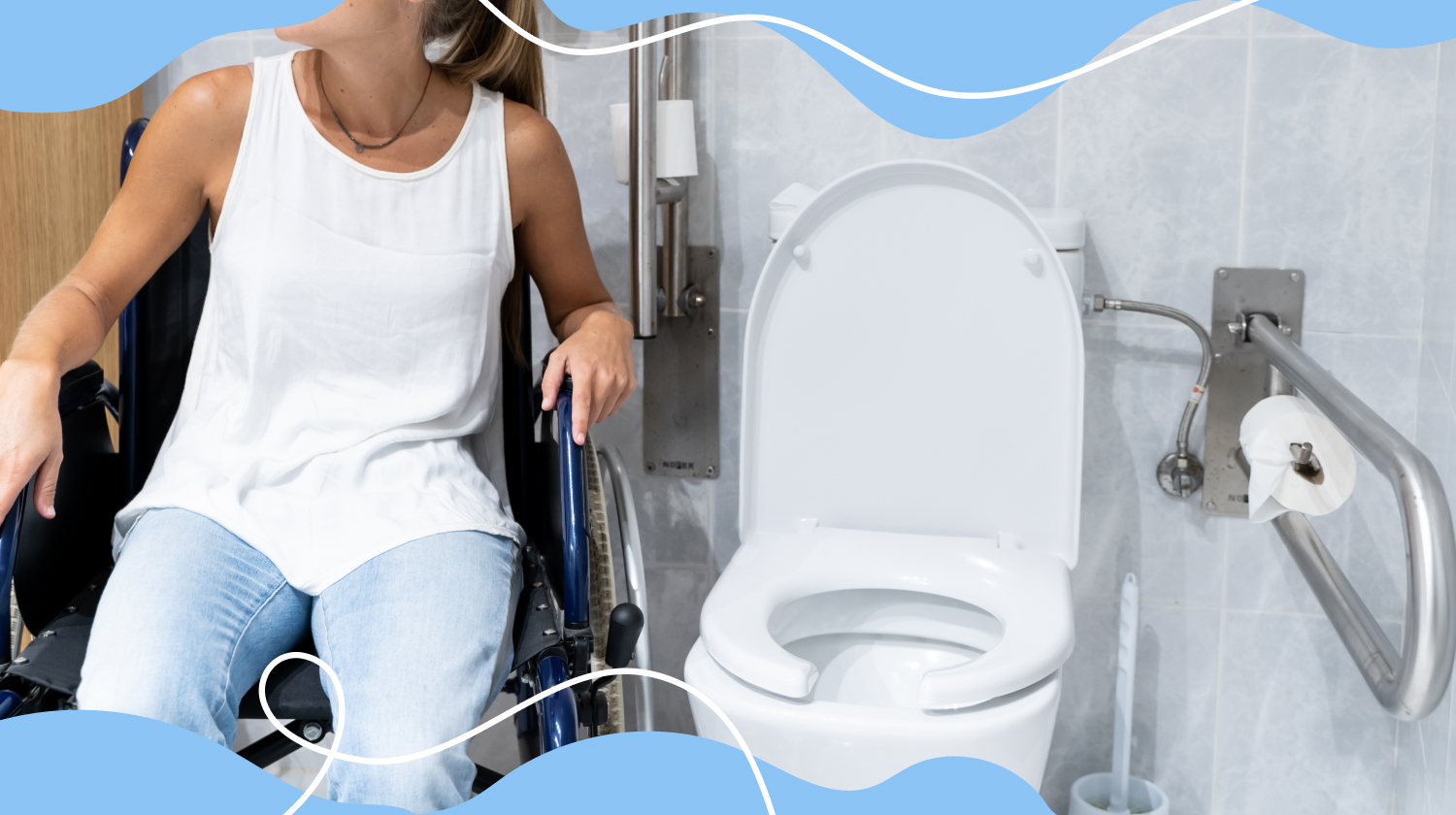 Expert's opinion
Expert's opinion
Expert's opinion
The article is a subjective view on this topic written by writers specializing in medical writing.
It may reflect on a personal journey surrounding struggles with an illness or medical condition, involve product comparisons, diet considerations, or other health-related opinions.
Although the view is entirely that of the writer, it is based on academic experiences and scientific research they have conducted; it is fact-checked by a team of degreed medical experts, and validated by sources attached to the article.
The numbers in parenthesis (1,2,3) will take you to clickable links to related scientific papers.
Self-Catheterization Problems: Definition & Tips For Beginners

Self-catheterization is a useful medical technique that enables people to manage urinary retention and preserve bladder function successfully through urinary catheters. It is frequently used by those who find urinating difficult due to various illnesses, or accidents.
Although self-catheterization can be useful, inexperienced users may encounter obstacles and difficulties. Sometimes self-catheterization can also lead to a urinary tract infection. Therefore, it is critical to proceed with self-catheterization with the right information and direction to achieve excellent results. Furthermore, it is essential to remember that self-catheterization should be done in a sober and peaceful state because alcohol and anxiety could hinder the procedure.
This article will define self-catheterization, review the many kinds of urinary catheterization, and offer beginner-friendly advice. We will also discuss typical self-catheterization issues and advise on planning, execution, aftercare, frequency, risks, and when to seek medical help.
What Is Self-Catheterization?
Self-catheterization is the process by which you drain urine by inserting a catheter into the urethra. People with disorders such as urinary retention, urethral trauma, neurogenic bladder, spinal cord injury, or people with urinary incontinence perform it. Self-catheterization is frequently advised as a way to make sure that the bladder is empty and to keep the urinary tract healthy. It also helps in bladder management. However, self-catheterization can be difficult for patients with urethral strictures.
Diet is also an important factor in maintaining urinary health and it is important to ensure that a person’s diet is balanced and covers their nutritional demands if they need to self-catheterize. This may entail taking the right supplements, such as vegan vitamin D supplements, to address potential inadequacies. Additionally, ensuring an adequate protein diet, perhaps through protein drinks for elderly, can improve muscle function and speed up the healing process for older people who rely on self-catheterization.
What Are The Types Of Urinary Catheterization?
Depending on the specific needs and wants, there are different kinds of urinary catheterization techniques. Typical examples include:
- Intermittent Catheterization: In this procedure[1], a catheter is inserted to empty the bladder and is then taken out after the bladder is empty. It is normally used after a spinal cord injury. Intermittent catheters are normally used for this process.
- Indwelling catheter: A Foley catheter, commonly called an indwelling catheter, is retained for a predetermined time. It consists of an inflatable balloon which secures the catheter in the bladder.
- Suprapubic Catheterization: During this procedure, a small cut is created in the lower abdominal area, providing access to the bladder. This procedure is often utilized when there are urethral problems.
Self-Catheterization Problems

Although self-catheterization is typically safe and successful, beginners could encounter frequent complications. For example, the following issues are frequently encountered by those who are new to self-catheterization:
- Finding the Urethra Can Be Difficult: Finding the urethra can be challenging, especially for novices. In addition, accurately locating the urethral opening could take some practice.
- Pain or Discomfort: Inserting the catheter may be uncomfortable or painful, especially if the procedure is improper. A water-based lubricant can be used to help solve this issue. Applying gentle pressure also helps. Hydrophilic catheters also help with smooth insertion.
- Infections[2]: Urinary tract infections can occur if basic hygiene procedures are not followed. Use sterile catheters and practice good hand hygiene at all times.
- Catheter malfunction: The catheter occasionally develops a blockage or fails to drain correctly. This can be the result of tube kinks or bad placement. Ensuring the catheter is operating properly is crucial.
How should I Prepare For Self-Catheterization?

Self-catheterization[3] should only be started after thorough preparation. Here are some guidelines:
- Gather Materials: Make sure you have all the necessary tools, such as a new catheter, lubricant, antiseptic wipes (baby wipes also work), plastic bag, and a urine collection container.
- Hand Wash: Before the operation, thoroughly wash your hands with a mild soap in warm water. This procedure is essential to reducing the possibility of introducing dangerous bacteria into the urethra.
- Clean Environment: Finding a Clean Environment is Important: Look for a clean, private space where you may comfortably do the self-catheterization technique. Make sure the surface is clean and not contaminated before using it.
- Get in a Comfortable Position: Put yourself in a comfortable position to easily access your genitalia. For example, you can squat, lie down with your knees bent, or sit on a toilet. Try out various postures to see which one suits you the most.
Genital Area Cleaning: To completely clean the genital area, use antiseptic wipes or light soap and water. To avoid the transfer of bacteria from the anus to the urethra, start from the front and wipe rearward. Then, gently dry the area with a clean towel or a paper.
How Do I Perform Self-Catheterization?
Men and women[4] can self-catheterize in slightly different ways. The general procedures and tips for self-catheterization are as follows:
For Men
- Apply lubricant with a water base to the first inches of the catheter while holding it close to the tip.
- Holding the penis erect with one hand, carefully put the tip of the catheter into the urethral hole. Then, bring the catheter up a little bit.
- Advance the catheter gently and gradually until urine begins to flow. Don’t force the catheter in, and exercise patience.
- Allow the urine to drain completely into the container once it flows steadily.
- Take care to slowly remove the catheter carefully to avoid urinary leakage once the urine stops. Carefully dispose of the used catheter.
For Women
- The legs should be spread wide as you sit or squat comfortably.
- The urethral hole can be seen by separating the labia with one hand.
- Apply lubrication to the catheter’s first several inches while holding it close to the tip.
- Gently push the catheter’s lubricated end into the urethral opening using your other hand. Then, aim the catheter a little to the back.
- Bring the catheter forward gradually and softly until urine begins to flow. Pause and carefully change the insertion angle or depth if you run into resistance.
- Allow the container to receive the entire amount of urine.
- Make sure there are no urine spills when carefully removing the catheter. Wipe off the residual urine to avoid other complications. Then, dispose of the catheter appropriately.
What Should I do After Finishing Self-Catheterization?
Following self-catheterization, it’s crucial to do the following actions for adequate aftercare:
- Genital Area Cleaning: To thoroughly clean the genital area, use antiseptic wipes or gentle soap and water. To dry, gently pat the area.
- Handwashing: Wash both your hands properly yet again with warm water and soap.
- Store or Dispose of Supplies: Comply with your healthcare provider’s directions regarding storing or disposing of the spent catheter and other supplies.
- Watch out for any complications or symptoms of infection, such as escalating pain, swelling, redness, urethral bleeding or unusual discharge. Contact your healthcare practitioner if you encounter any alarming symptoms.
How Often Do I Need To Perform Self-Catheterization?
Individual circumstances, medical problems, and advice from your healthcare provider affect how frequently you self-catheterize. Regarding the timing and frequency of self-catheterization, you must heed their advice.
To achieve normal bladder emptying and properly control urinary retention, some people may need to self-catheterize many times daily. This frequency is often required for people who suffer from disorders such as neurogenic bladder dysfunction or urine incontinence.
On the other hand, some people require fewer instances of self-catheterization. For example, this may be the situation for people who experience brief urinary retention following surgery, or another medical procedure. In these situations, your healthcare practitioner will advise you on how well you are recovering regarding the length and frequency of self-catheterization.
It is important to note that self-catheterization should always be carried out according to your healthcare provider’s advice. Normal bladder emptying with self-catheterization helps avoid issues such as urinary tract infections, bladder overdistension, and possible harm to the urinary system.
Risks And Side Effects
Self-catheterization is largely risk-free. However, there are a few possible hazards and negative consequences to be aware of:
- Infections: Urinary tract infections can result from poor hygiene procedures during self-catheterization. Use sterile tools, practice basic hand hygiene, and adhere to recommended cleaning procedures to avoid health problems.
- Trauma or Injury: The urethra or bladder may sustain trauma or injury if the catheter is placed aggressively or at an incorrect angle. Throughout the insertion process, always be considerate and patient.
- Pain or Discomfort: Some people may feel slight pain or brief discomfort while self-catheterizing. The inconvenience can be reduced by using appropriate lubrication, relaxation, and insertion techniques.
When To See Doctor

Although self-catheterization can be handled without medical intervention, in some circumstances, it is generally best to do so:
- If you have severe pain, bleeding, or infection-related symptoms like fever and chills.
- If you have trouble inserting the catheter or experience ongoing issues during the procedure.
- If you have worries about your urinary health or notice changes in the color or consistency of your urine.
Conclusion
Self-catheterization[5] is an effective method for people who struggle with urinary retention. By following the right methods and strategies, beginners can successfully use self-catheterization and conquer any potential difficulties. Remember that the process requires patience, good hygiene, and a laid-back attitude. Feel free to ask your healthcare professional for advice if you have any worries or problems. Self-catheterization can greatly enhance your quality of life and urinary health with the correct information and care.
+ 5 sources
Health Canal avoids using tertiary references. We have strict sourcing guidelines and rely on peer-reviewed studies, academic researches from medical associations and institutions. To ensure the accuracy of articles in Health Canal, you can read more about the editorial process here
- Savory, G. (2017). Intermittent Self Catheterisation. [online] Bladder & Bowel Community. Available at: https://www.bladderandbowel.org/conservative-treatment/intermittent-self-catheterisation/
- Sedor, J.R. and S. Grant Mulholland (1999). HOSPITAL-ACQUIRED URINARY TRACT INFECTIONS ASSOCIATED WITH THE INDWELLING CATHETER. [online] 26(4), pp.821–828. doi:https://doi.org/10.1016/s0094-0143(05)70222-6.
- Clinic, C. (2020). Self-Catheterization (Clean Intermittent Catheterization): How To – Cleveland Clinic. [online] Cleveland Clinic. Available at: https://my.clevelandclinic.org/health/treatments/15434-clean-intermittent-catheterization.
- Saint Luke’s Health System. (2014). Discharge Instructions: Self-Catheterization for Women. [online] Available at: https://www.saintlukeskc.org/health-library/discharge-instructions-self-catheterization-women.
- Cambridge University Hospitals. (2022). Self-catheterisation in male patients: Frequently asked questions. [online] Available at: https://www.cuh.nhs.uk/patient-information/self-catheterisation-in-male-patients-frequently-asked-questions/



